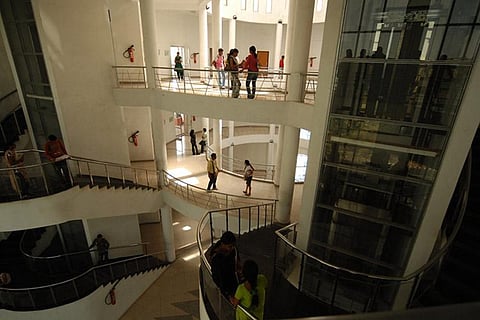

In the past five years from 2015-16 to 2019-20, there has been an 18.2% rise in female enrolment in higher education, with 11.4% growth in the overall enrolment, said the All India Survey on Higher Education (AISHE) 2019-20, which the Union Ministry of Education released on June 10. The AISHE report features key performance indicators that reflect the current status of higher education in India. A total of 1,019 universities, 39,955 colleges and 9,599 stand-alone institutions participated in the survey.
The survey, however, found that the share of girl students is lowest in institutes of national importance, followed by deemed universities under the government, and state private universities. The survey also found that female participation in professional courses is lower in comparison to academic courses.
The Gross Enrolment Ratio (GER) in higher education in India is 27.1%. The GER indicates the ratio of the number of students enrolled in a certain level of education (regardless of their age) to the population of the age group (18-23 years) that officially corresponds to that level of education. The GER for the male and female population is 26.9% and 27.3% respectively. For Scheduled Castes and Scheduled Tribe, the GER is at 23.4% and 18%.
The total enrolment in higher education has been estimated to be 38.5 million students, with 19.6 million male and 18.9 million female students, who constitute 49% of the total enrolment. About 79.5% of these students are enrolled in undergraduate level programmes, while about 0.5% of them are enrolled in PhD programmes.
Of the total 38.5 million students enrolled in higher education, Scheduled Caste students constituted 14.7% and Scheduled Tribes students made up 5.6% of the total enrolment, while 37% students belong to Other Backward Classes, 5.5% students belong to Muslim Minority and 2.3% from other Minority Communities.
"In the last five years from 2015-16 to 2019-20, there has been a growth of 11.4% in the student enrolment. The rise in female enrolment in higher education during the period is 18.2%. Gender Parity Index (GPI) in higher education in 2019-20 is 1.01 against 1.00 in 2018-19 indicating an improvement in the relative access to higher education for females of eligible age group compared to males," the report said. According to the report, the number of female students is lowest for institutes under state private open university (2,499) followed by institutes under State Legislature Act (3,702) whereas the share is highest in the state public universities.
"Share of female students is lowest for institutes of national importance (24.7%) followed by deemed universities government (33.4 %) and state private universities (34.7 %), whereas the share of female students in institutes under State Legislature Act is 61.2 %," the report said. "Share of female students in the state public universities is 50.1% and in central universities, it is 48.1%," it said.
"Female participation is very high and has also increased sharply at MA, MSc and MCom levels during the last five years. However, female participation is still very low at undergraduate courses like BCA, BBA, BTech or BE and LLB," it said. The report pointed out that the percentage share of male students is higher than female students in almost every level, except MPhil, postgraduate and certificate courses.
"Student enrolment at undergraduate level has 50.8% male and 49.2% female. Diploma has a skewed distribution with 65.1% male and 34.9% female. PhD programmes have 55% male and 45% female. Integrated levels have 56.2% male and 43.8% female. PG Diploma student enrolment is 53.6% for male students and 46.4% for female students," it said. The relatively higher share of male enrolment than female enrolment of students is also seen across the levels in most of the states. Out of 38,986 students who were awarded a PhD level degree during 2019, 21,577 were male and 17,409 were female (about 45%).
> At the undergraduate level, the highest number of students (32.7%) are enrolled in Arts/Humanities/Social Sciences courses, followed by Science (16%), Commerce (14.9%) and Engineering and Technology (12.6%). At the postgraduate level, the highest number of students are enrolled in Social Sciences streams, followed by Science courses. At the PhD level, however, the maximum number of students are enrolled in Engineering and Technology streams followed by Science.
> More than 78.6% of colleges across India are run by the private sector, accounting for 66.3% of the total enrollment. Of these, around 65.2% of colleges are private-unaided and 13.4% private-aided. The proportion varies across states. While the Telugu states of Andhra Pradesh and Telangana have about 80% private-unaided colleges, and Uttar Pradesh has 78.5% private-unaided colleges, Chandigarh only has 8.0% private-unaided colleges.
> There are a total of 15,03,156 teachers, out of which about 57.5% are male teachers and 42.5% are female teachers. At the national level, there are merely 74 female teachers per 100 male teachers.
(With PTI inputs)
Read: